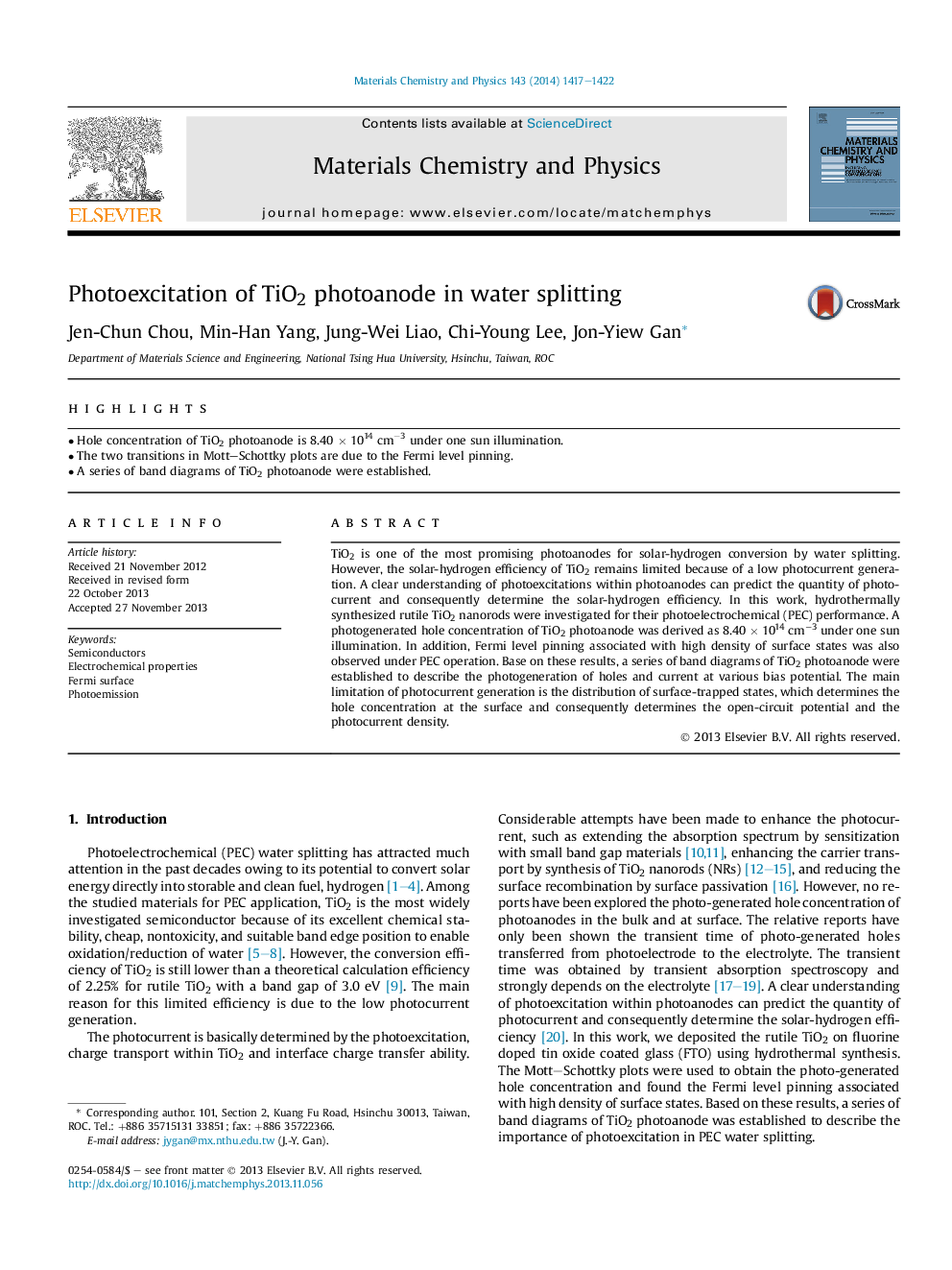| Article ID | Journal | Published Year | Pages | File Type |
|---|---|---|---|---|
| 1522267 | Materials Chemistry and Physics | 2014 | 6 Pages |
Abstract
TiO2 is one of the most promising photoanodes for solar-hydrogen conversion by water splitting. However, the solar-hydrogen efficiency of TiO2 remains limited because of a low photocurrent generation. A clear understanding of photoexcitations within photoanodes can predict the quantity of photocurrent and consequently determine the solar-hydrogen efficiency. In this work, hydrothermally synthesized rutile TiO2 nanorods were investigated for their photoelectrochemical (PEC) performance. A photogenerated hole concentration of TiO2 photoanode was derived as 8.40Â ÃÂ 1014Â cmâ3 under one sun illumination. In addition, Fermi level pinning associated with high density of surface states was also observed under PEC operation. Base on these results, a series of band diagrams of TiO2 photoanode were established to describe the photogeneration of holes and current at various bias potential. The main limitation of photocurrent generation is the distribution of surface-trapped states, which determines the hole concentration at the surface and consequently determines the open-circuit potential and the photocurrent density.
Related Topics
Physical Sciences and Engineering
Materials Science
Electronic, Optical and Magnetic Materials
Authors
Jen-Chun Chou, Min-Han Yang, Jung-Wei Liao, Chi-Young Lee, Jon-Yiew Gan,
